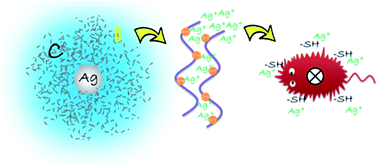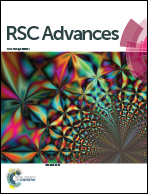Tunable Ag+ ion release from Ag@C for antibacterial and antifouling performances†
Abstract
Silver nanoparticles have been regarded as promising candidates in the market as antibacterial agents. However, large production volumes and toxic nature of silver lead to potentially adverse effects on human health and environment, and the rapid consumption of Ag+ ion results in short-term efficacy. In this study, carbon-encapsulated Ag (Ag@C) was designed and used as an antibacterial agent in view of the superior antibacterial property of silver nanoparticles, and a tunable Ag+ ion release rate, which was achieved by varying the thickness of the carbon shell. Structural changes were systematically investigated by a series of experimental and theoretical studies. The results showed the evolution of Ag@C from Ag nanoparticles to triangular Ag nanoplates and finally to carbon-encapsulated hexagonal Ag nanoplates. The antibacterial and antifouling performances of Ag@C towards Escherichia coli/Staphylococcus aureus and Platymonas subcordiformis/Tropidoneis lepidoptera were investigated and the antibacterial mechanism was also discussed. The released Ag+ ion concentrations were controllable and sustainable at 39.4 and 0.667 ppb for Ag@C with carbon shell thicknesses of 31.5 and 247 nm, which attenuated the toxicity of the Ag nanoparticles. Ag@C showed stable antibacterial and antifouling properties and proved to be potentially suitable for biological and environmental applications.


 Please wait while we load your content...
Please wait while we load your content...